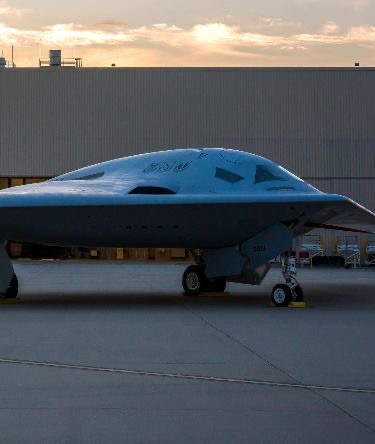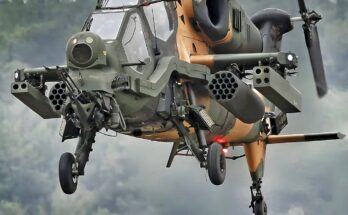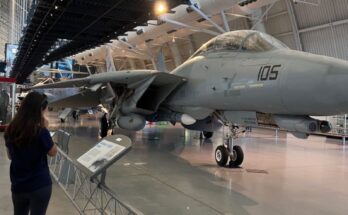
The B-21 Raider is the newest strategic bomber being developed for the United States Air Force, designed to serve as the backbone of America’s long-range strike capabilities for decades to come. Built by Northrop Grumman, the aircraft represents the next generation of stealth technology, combining advanced materials, digital engineering, and open systems architecture to ensure it can adapt to future threats. Officially unveiled in December 2022, the Raider is expected to enter service in the mid-2020s, gradually replacing the aging B-1 Lancer and B-2 Spirit.
The name “Raider” pays tribute to the Doolittle Raiders of World War II, who carried out a daring bombing mission over Japan in 1942. That historical connection underscores the Air Force’s intent for the B-21: an aircraft capable of striking anywhere in the world with precision and survivability. Unlike its predecessors, the B-21 has been designed from the start with global reach in mind, ensuring that it can operate in highly contested environments against advanced adversaries.
One of the Raider’s defining features is its stealth capability. While details remain classified, it is widely believed that the aircraft uses state-of-the-art radar-absorbing materials and a refined flying wing shape to minimize detection. The design builds on lessons learned from the B-2 Spirit but incorporates modern advances that make the Raider more difficult to track and more affordable to maintain. A common criticism of the B-2 was its high cost of upkeep; the B-21 program emphasizes sustainability and readiness as key priorities.
Another important aspect is versatility. The B-21 is expected to be capable of carrying both conventional and nuclear weapons, making it a critical element of the United States’ nuclear triad. It will be able to deliver long-range precision strikes, penetrate air defenses, and support a variety of mission types, from deterrence to direct combat operations. Its open systems architecture means the bomber can be upgraded more easily as technology evolves, reducing the risk of becoming obsolete in the face of new threats.
The Raider is also notable for its emphasis on digital engineering. The aircraft has been designed and tested using advanced simulation and modeling tools, which reduces development costs and helps accelerate production timelines. This approach allows engineers to spot potential issues early, refine designs efficiently, and prepare for future upgrades without needing to start from scratch. In a defense environment where costs often spiral, the Air Force has stressed the importance of keeping the B-21 affordable and producible at scale.
Strategically, the B-21 will play a central role in deterring near-peer competitors such as China and Russia. As those nations invest in sophisticated air defense networks, the United States requires an aircraft capable of operating in denied airspace. The Raider fills that gap, ensuring the Air Force maintains a credible ability to project power across the globe.
In sum, the B-21 Raider is more than just a new aircraft; it is a symbol of the Air Force’s future. By blending stealth, adaptability, and cost-conscious design, the Raider aims to secure American airpower well into the mid-21st century.


